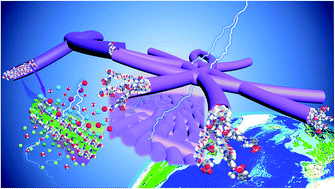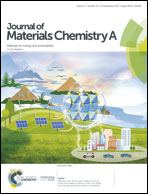Symmetrically recombined nanofibers in a high-selectivity membrane for cation separation in high temperature and organic solvent†
Abstract
Development of polymeric cation exchange membranes (CEMs) with high thermostability and resistance to organic solvents is an urgent challenge for materials chemistry and a major problem for industrial application. Herein, we report a novel CEM design, which symmetrically recombines poly(p-phenylene terephthalamide) nanofibers and 2,5-diaminobenzenesulfonic acid based on amide hydrolysis and amide condensation reaction for ion separation in high temperature and organic solvent aqueous applications. The resulting membrane (10 μm thickness) exhibited greater thermodynamic and electrochemical properties than the common commercial CEMs. Attributed to the membrane's specific structure, size sieving, and electrostatic repulsion effects, the resulting membrane showed a more selective separation of monovalent cations in electrodialysis. Moreover, it has demonstrated exceptional desalination at high temperature (as high as 100 °C) and organic solvent aqueous environments (as high as 80% acetone solution), which had not been previously reported in electrodialysis. The resulting membrane combines the benefits of nano-materials and a specific structure design allowing for electrodialysis in high temperature and organic solvent aqueous application environments.



 Please wait while we load your content...
Please wait while we load your content...